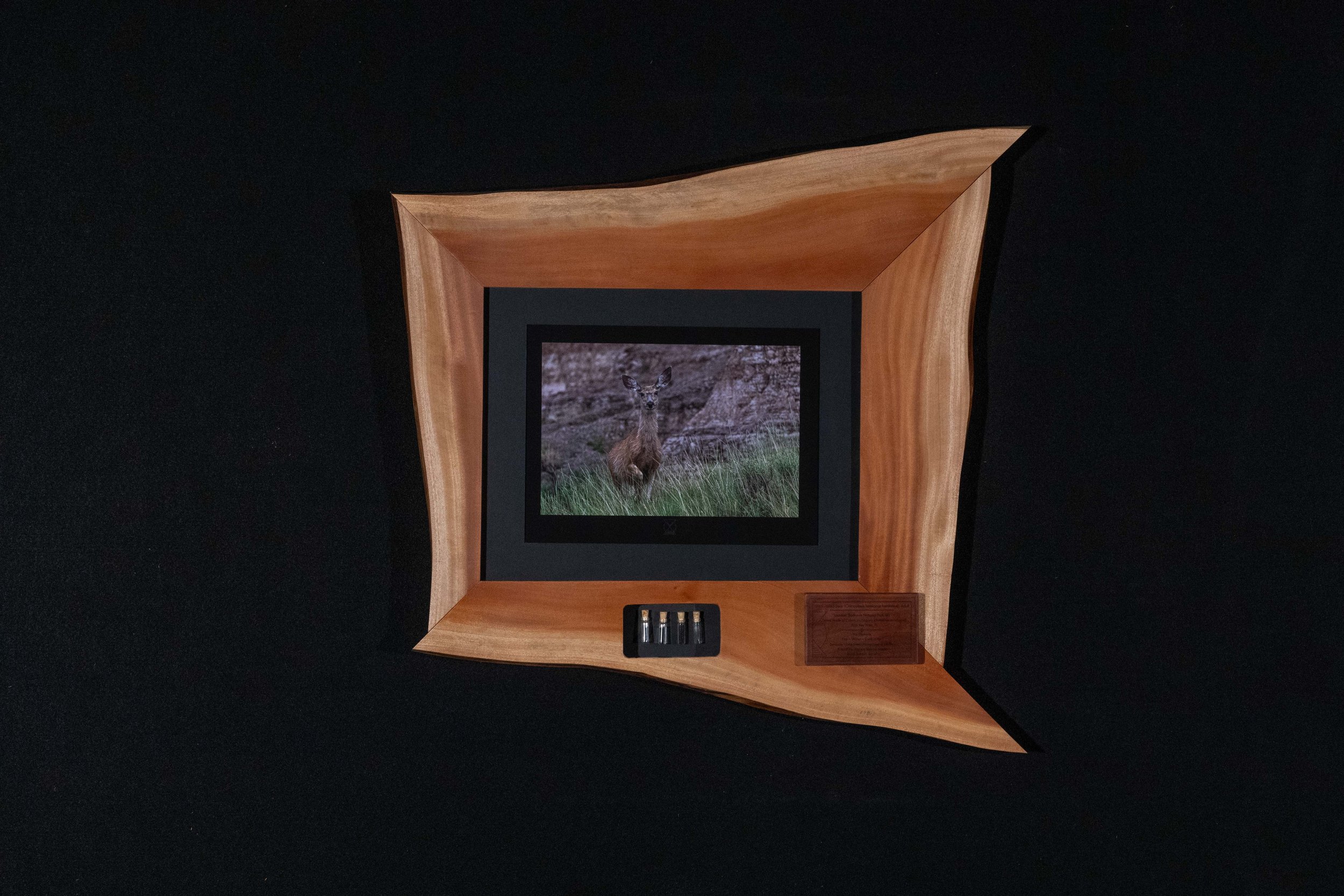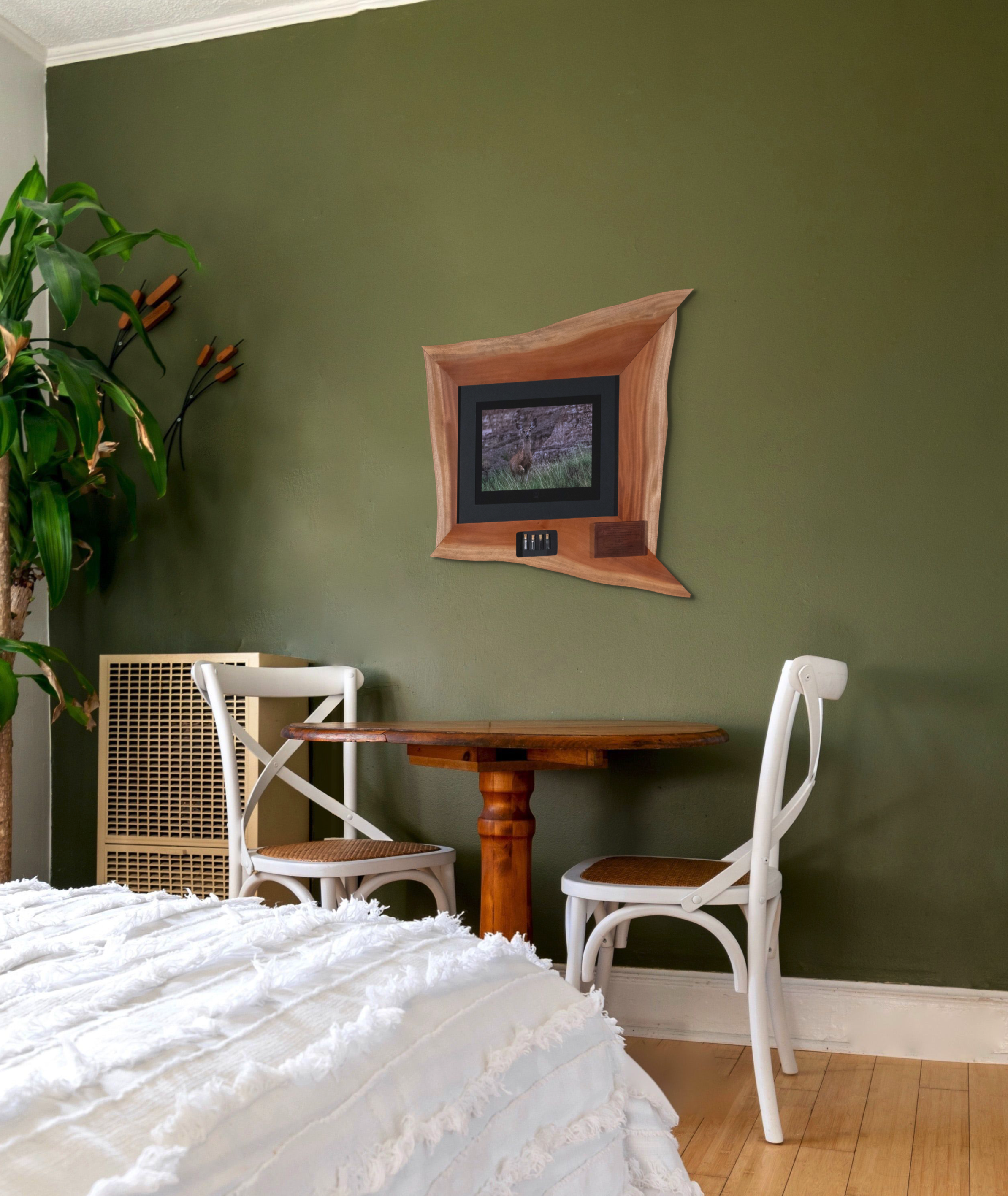Black-tailed Deer - Badlands National Park




Black-tailed Deer - Badlands National Park
Black-tailed Deer (Odocoileus hemionus columbianus), Adult, Female
Just after a rainstorm came through the park I saw this Doe coming out to get a last bite to eat before it became night. This photo was taken 6/7/22 at 7:26 pm.
WeForest Donation: $220 (What is this?)
Print Number: 1/3
Print Size: 8 x 12
Total Dimensions: 30 x 30
Hanging equipment and certificate of authenticity included.
PHOTOGRAPH
Black-tailed Deer (Odocoileus hemionus columbianus)
Common throughout the Pacific Northwest of the United States, the Black-tailed Deer and its very close cousin, the Columbian Black-tailed Deer, are subspecies of the Mule Deer. The easiest way to tell them apart from the more common, Mule Deer, is their namesake. Although Mule Deer do have a black-tipped tail, the Black-tail Deer has a fully black, and very distinctive tail. We all know deer the be grazers, usually to the point of destroying our gardens or plants we most love in our front yards. One beautiful part of their diet though is the Black-tailed Deers desire to eat western poison oak. A nuisance to say the least for humans, it seems to not at all bother the deer, and for that I say thank you.
Location
Badlands National Park, SD
This is a national park that I have passed through a number of times on my way out west from Memphis, or on my way back. I have yet to intentionally go to Badlands and stay for a couple of weeks so there is still much to explore, but I do find it to be a wonderfully beautiful and quite unique landscape from many other places. The history of time that if immediately evident when looking at the lines of different eras in the bare buttes all around is quite breathtaking. In shape it is a very unique park as well, long and skinny, the main road takes to straight through the park and allows you to get a decent sense of the entirety of the park relatively easily. I also love a drive through at minimum and look forward to uncovering more secrets of this place.
FRAME
Cuban Mahogany (Swietenia mahagoni)
Cuban Mahogany is one of three species of Mahogany and it was originally the most widely used of the three. Nowadays, Honduran Mahogany is the much more prevalent wood and what most people would recognize as Mahogany. Native to the Carribbean, Cuban Mahogany’s northernmost range does include the far south of Florida, including the Keys. I happen to get all of my Cuban mahogany from a salvager in the Keys who removes the trees from construction sites before cutting it into slabs and drying it.
THE ELEMENTS
Fire, Water, Earth, and Air
In the display case in the bottom of the frame, four items are preserved glass vials. The items represent the elements: fire (wood charcoal), water (mineral oil), earth (soil), and air (a milkweed seed). I include these items in my work as a symbol of the interconnectedness of all life on earth, and as a reminder that humans must do better.
THE PLAQUE
I engrave a wooden information plaque for each work. The plaque includes what the photograph is of, the location of the photograph, what type of wood the frame is made of and where I got the wood from. The plaques also explain what the vials are in each display case, and even state the meaning of my logo. The plaques are attached magnetically and can be removed to read or to store on the back of each frame if you prefer not to have it displayed on the front.

